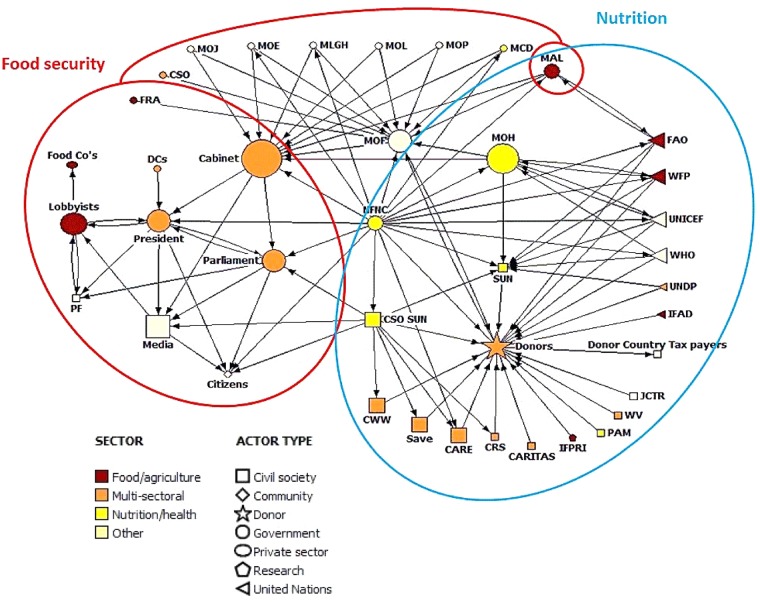Figure 2.
Advocacy coalitions in the Zambian nutrition policy sub-system. Notes: ‘Sector’ colour denotes the sector the organization is seen as working in, according to respondents. The blue and red clusters overlaying the map are added after analysis of the study data, denoting broad ‘advocacy coalitions’. Relative influence of each actor was calculated by dividing the assigned influence value for each actor by the highest influence allocated by the respondents. Size of the actors on the maps then denotes relative influence assigned by respondents. The link of accountability was used as it was a key theme that emerged during early analysis of the interview data. The network map appears to be capturing several forms of accountability, including financial accountability through funding contracts; institutional accountability in terms of management or oversight structures; and political accountability through the processes of democracy. ‘Citizens’ explicitly included ‘voters’; ‘farmers’; and ‘community as recipients of programs’. There was a sense in the discussions that these were separate in people’s minds as ‘urban citizens and rural subjects’; Community and Citizens were noted as separate actors, although when voting and political mobilization were discussed they were conflated. ‘Donors’ mentioned were DfID, Irish Aid, SIDA, World Bank, EU and USAID. ‘Food companies’ mentioned were agro-dealers, beverage companies, food manufacturers/processors, millers, retailers, ZamBeef and ZamSugar. ‘SUN’ was understood as the broad SUN Movement, and explicitly incorporated the Zambian SUN Fund as a separate entity to its individual donors. ‘National NGOs’ were mentioned in connection with donors and citizens, but accountability links were not made explicit by the respondent group so these do not appear on the network map.

